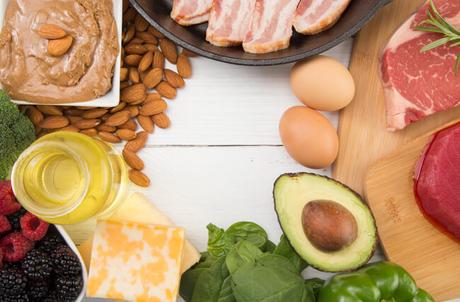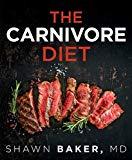
Ready to try a low-carb diet to lose weight - but not sure where to start? Should you pick Atkins, Paleo or Keto? And is it going to be impossibly hard?
My first attempt to go low-carb was in 2007 with the Atkins Diet. Since then, I have tried all sorts of other low-carb variations - the good, the bad and the ugly - before I found the optimal plan that worked for me.
Here's a summary of what I learned so you can decide which way is right for you.
What exactly does "low-carb" mean?
You may be surprised, but there is no single definition of a "low-carb diet".
Technically, anything below the official government guidelines can be considered "low-carb". In most countries, the guideline is around 200-300g of carbs a day.
Don't let that worry you. These recommendations are based on seriously outdated research - going back to 1950s and even beyond that.
The latest studies point to the dangers of excessive carb consumption - especially highly refined carbs like sugar and white flour. And dietary fat - once demonised as the ultimate food villain - has been proven innocent.
Low-carb diets are becoming more and more popular every year. It is a great way to lose weight while staying healthy and happy.
You just need to pick a plan that's right for you.
Low-carb is a spectrum
Most popular low-carb diet plans fall in the range of between 20g-100g of carbs a day. There is a great deal of variation within this range.
Your lifestyle on 20g of carbs a day would be completely different to that on 100g a day. See our article on carb content of common foods to get a better idea about carb levels.
The right level is the one you can stick to
On the lower end of the spectrum (20-30g of carbs a day), you find ketogenic diets. The state of ketosis (more on that later) is a pretty fundamental change to your body.
It has multiple benefits and generally, weight loss is faster and easier. But this lifestyle does require a lot of discipline and effort, especially for complete beginners. If you can do it - fantastic!
But for those who keep failing and restarting, a more liberal plan with more carbs would be better. The best diet is the one you can stick to!
So let's look at all available low-carb diet options, starting from the easiest.
Sugar-free, wheat-free
Daily carb limit: 100g-150g
The simplest way to lower your carbs is to ditch just two foods - refined sugar and white flour. These two are the real bad-diet villains (not the poor innocent fat the food industry tried to brainwash us about).
Refined sugar and white flour are highly processed and highly addictive. They are completely unnatural. There are no natural foods that share their characteristics.
All they give you is basically empty calories. They mess with your health in many ways. And yes - they make you fat.
All doctors and dietitians (even those who are not on board with a low-carb approach) agree that cutting out these two foods is a great idea.
If you commit to doing that, you would also have to ditch all junk foods and processed foods. Most of them include sugar, white flour or both. Beware the many fancy names of sugar - it tries to hide on labels.
This one simple step will cut a significant portion of low-quality carbs from your diet. You can still enjoy natural high-carb foods like fruit, root vegetables and whole grains.
This one change is a great start. It would definitely be good for your health. You are likely to see other immediate benefits like better digestion and more energy.
However, weight loss is not guaranteed at this level. Your carb levels would probably be still too high to make any real difference to fat burning.
Moderate low-carb diets
Daily carb limit: 100g and below
Moving further down the spectrum, we have moderate low-carb diets. They are liberal enough to include a wide variety of foods, so you won't get bored.
But carbs are lowered to the point where you can kickstart your weight loss.
The most popular diet in this group is Paleo.
The premise is to eat only natural wholefoods that were accessible to our ancestors in the Paleolithic era. Paleo eliminates all processed foods, plus foods that have been over-cultivated by agriculture - for example, all grains, all legumes and white potatoes.
Paleo does not specifically aim to be low-carb. But it gets there anyway. It turns out that processed and over-cultivated foods are all high in carbs!
Another example of a moderate low-carb diet is Zone Diet - although it has somewhat diminished in popularity over the last decade.
Ketogenic low-carb diets
Daily carb limit: 20g-30g of net carbs
Ketogenic diets sit on the lowest end of the low-carb spectrum.
On ketogenic diets, you lower your carbs to about 20g a day (30-40g for larger people and athletes). Your body enters a metabolic state called "ketosis" - it switches to burning fat as the primary source of fuel instead of glucose.
Ketosis brings many magic benefits - excess fat melts off your body quickly, you have lots of energy and you never have to feel hungry. That's why you hear so many rave reviews of Keto.
But getting into ketosis - and staying there - is not easy, especially for beginners. Keto lifestyle is dramatically different to standard diets. You would have to ditch sugar, all grains and all fruit completely. Your diet would be based on animal proteins, healthy fats, full-fat dairy and a small amount of salad vegetables.
Ketogenic lifestyle does require a lot of discipline and planning, especially in the beginning. But if you can manage it, you will see great results!
The most popular ketogenic diets are Keto and Atkins Phase 1 (basically the same thing).
Buy on Amazon:

Zero-Carb / Carnivore
Daily carb limit: 0g
Zero-carb is the most radical end of the low-carb spectrum - literally zero carbs.
People who follow this lifestyle live on animal proteins alone: meat, eggs and dairy.
Some go into a very hard-core carnivore mode where the only permitted food is red meat (usually beef) - no poultry, no eggs and no cheese.
It sounds completely insane at first. I must admit, that's what I thought when I first came across ZC/Carnivore.
But I have changed my mind over the years. It is becoming more and more popular, with hundreds of thousands of people following this food plan for months and even years.
It appears to be especially effective for people who suffer from metabolic and auto-immune disorders. Although we don't yet have any meaningful research on this subject, it appears that Carnivore diet has many of the same benefits as extended fasting.
But there is a thriving community of people and plenty of anecdotal evidence that it can be a healthy and rewarding lifestyle.
Buy on Amazon:

Dukan Diet
Low-carb and low-fat
Do you remember I mentioned "the good, the bad and the ugly" of low-carb in the introduction?
I don't want to point any fingers, but in my personal opinion, the "ugly" part of the spectrum is Dukan.
Most low-carb diets are high in fat (LCHF). Effectively, they replace your main source of fuel from carbs to fat.
Dukan is rather radical in that it is both low-carb AND low-fat. So you don't get the full benefits of LCHF like the absence of hunger or better energy.
I personally wouldn't go there - but you never know, it might work for you!
Dukan diet has an intricate structure with alternating days and fixed phases, to make it manageable. And there are many people who have achieved good results on Dukan. For example, it is rumoured that HRH the Duchess of Cambridge is a fan.
What's the best low-carb diet for you?
Once again, the best diet is the one that you can stick to - while losing weight.
Ketogenic diets enable faster weight loss - but are harder to stick to.
Moderate plans are easier - but weight loss is slower (and sometimes non-existent).
If you are still not sure which plan sounds right for you, try a phased low-carb diet.
They start at the ketogenic end of the spectrum and gradually become more liberal.
The Original Atkins Diet - Great for beginners
With this in mind, my recommendation for complete low-carb beginners is Atkins.
Atkins has four phases to help you find your individual optimal low-carb level. It has a long track record of almost 50 years and millions of followers around the world.
The first phase - Atkins Induction, also called Atkins Phase 1 - is ketogenic at 20g net carbs a day. Induction lasts for two weeks minimum, which gives you the chance to break the addiction to sugar and reset your metabolism. It's basically the same as Keto.
If you find Atkins Induction easy, you can stay there for 6 months or even longer.
If you find it hard, you can move on to phases 2 and 3, where you will gradually add more carbs until you find your optimal level.
One word of caution - these days, Atkins Nutritionals has nothing to do with Dr Atkins or his family. They have been tweaking the original diet, and not always for the best.
I recommend going back to the last edition of the Atkins book written by the man himself.
Buy on Amazon:

Any questions?
Do you have any thoughts or questions on choosing a low-carb diet? Please ask in the Comments section below.

